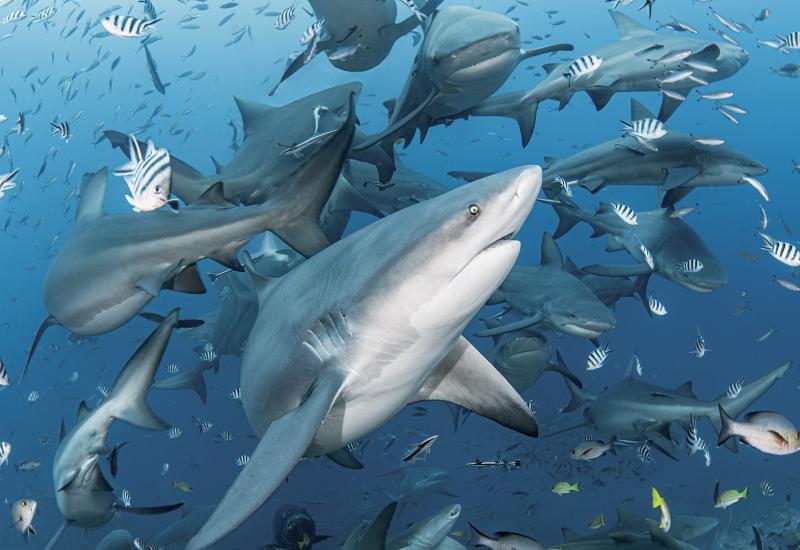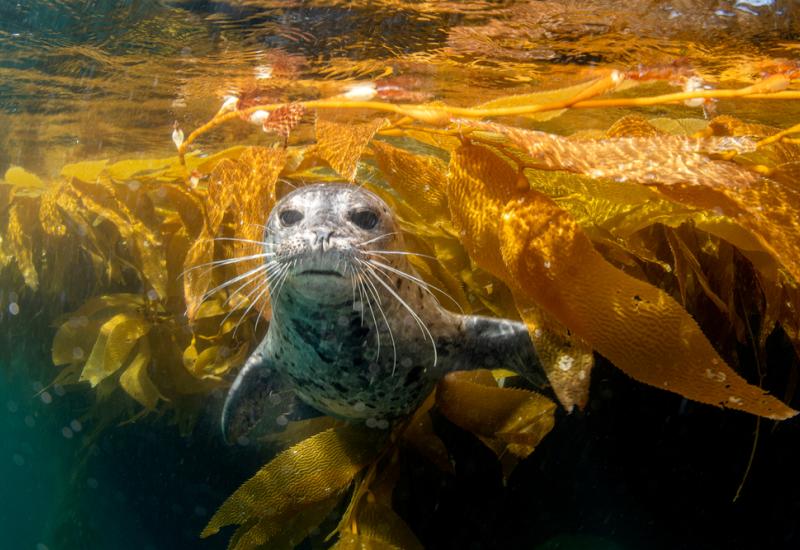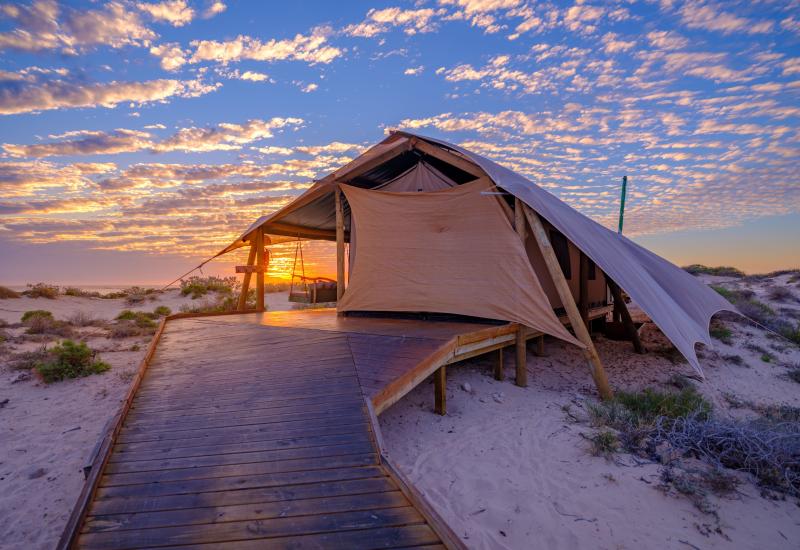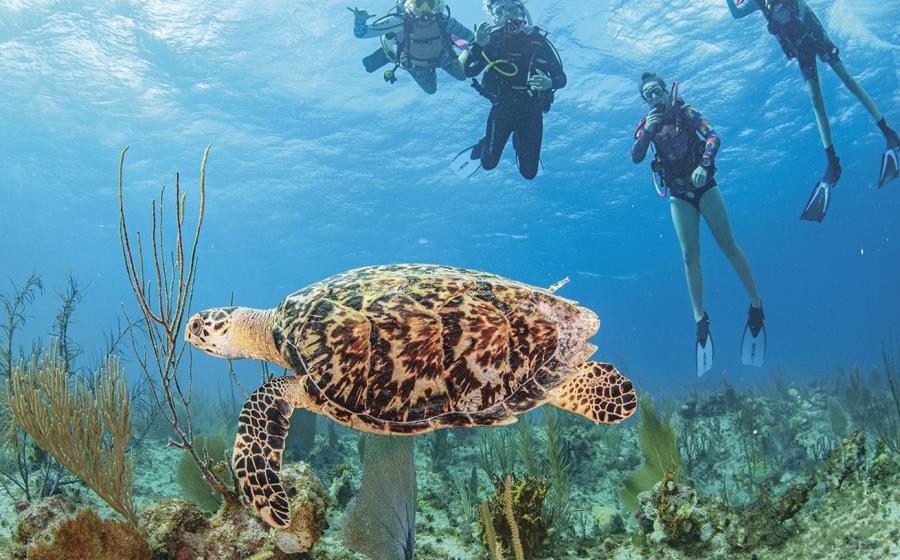Reef Encounters: Leafy Sea Dragons
The perfectly camouflaged leafy sea dragon is a master of mimicry that drifts slowly over the sea grass. Swaying back and forth in the light surge as they hunt, their hypnotic mannerisms can fool even the most seasoned eyes.
Leafy sea dragons (Phycodurus eques) are related to pipefish and seahorses and they share the same fused jaw feature. They can reach up to 30 centimeters in length and are often found alone or in loose groups. Leafys prefer temperate to cooler waters and are depth sensitive, living between 3 and 10 meters. It’s the male that carries the eggs, up to 250 at a time, and they appear as a bright-red patch on the abdomen of the male's belly.
Like pipefish and seahorses, leafy sea dragons employ small rakers on either side of their head and body that help them to move through the water effortlessly, stabilizing against surge and current. What sets them apart from the others is their amazing kelp-like appendages. Seeing one for the first time, in their natural habitat, is nothing short of show-stopping.
The leafy sea dragon is endemic to South Australia, and Rapid Bay Jetty was my destination of choice to find them. The pylons under the jetty are adorned with soft corals, sponges, colonial sea squirts and the kelp that creates the perfect habitat for the leafys.

Mike BartickSelecting the right lens is everything for this type of encounter, and for critters this ornate I wanted to capture some tight photos of the entire body with very little background. This photo happened just after spotting my first leafy. It peered at me through the kelp, then moved away quickly and joined another one a few meters away. As I approached and composed, I realized there were three in front of me.

Mike BartickCloseup photo of the leafy’s face reveals the details for which they are known. The posture of the leafy is much like a seahorse — continually facing down and turning away and very sensitive to modeling lights.
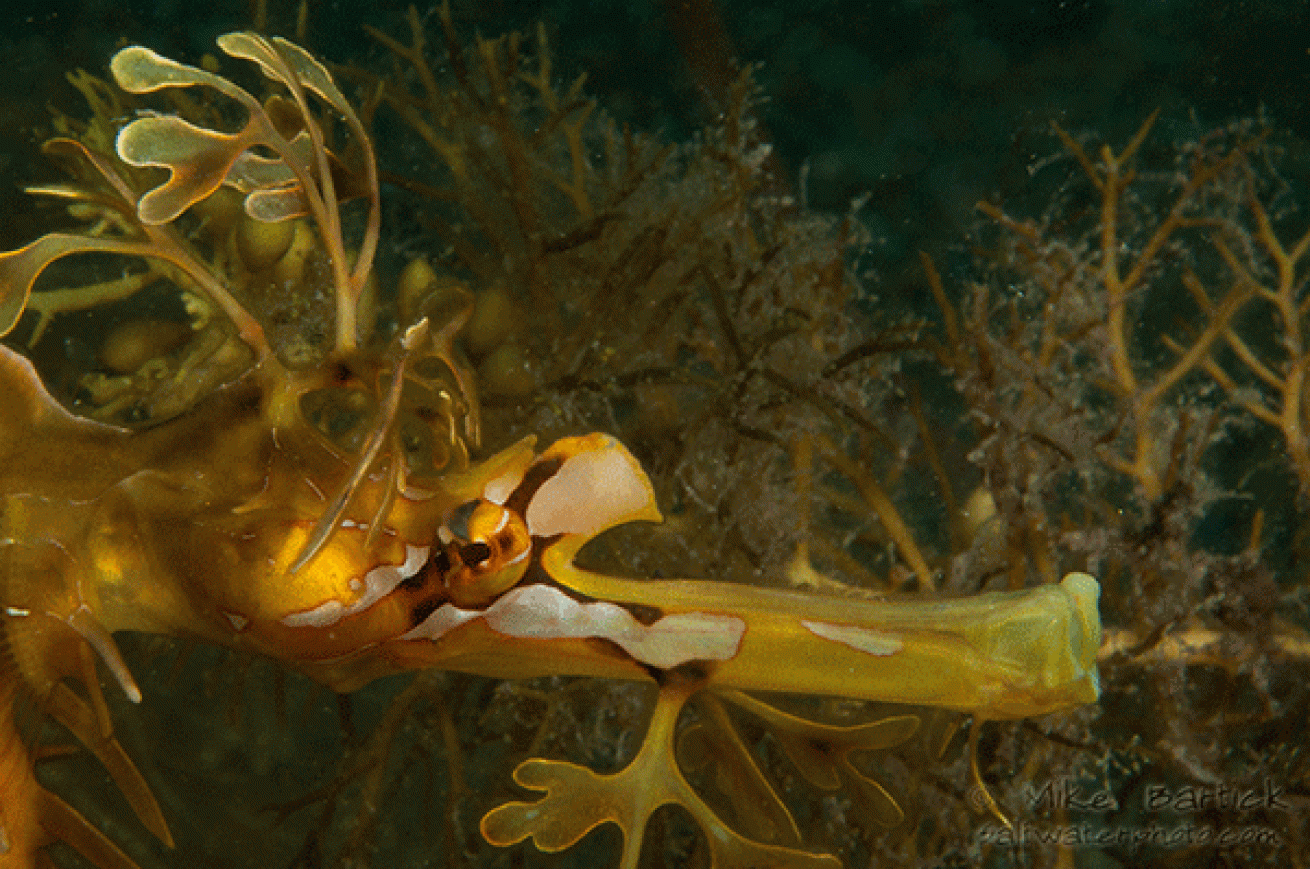
Mike BartickLeafys use their hard tubular snout to vacuum up mysid shrimp and other small organisms that live in the algae. Slowly and methodically, they feed all day long moving up and down in the kelp.

Mike BartickThis shows the environment under Australia's Rapid Bay Jetty. The fallen pylons of the older jetty are covered with coral and algae growth, creating the perfect habitat for leafys and other endemic critters

Mike BartickMy dive buddy discovers her first leafy and engages in a tense stare-down. The size of a leafy sea dragon varies, but as you can see by the scale of my model, they are pretty large once they are mature and can be photographed with macro and wide-angle lenses.
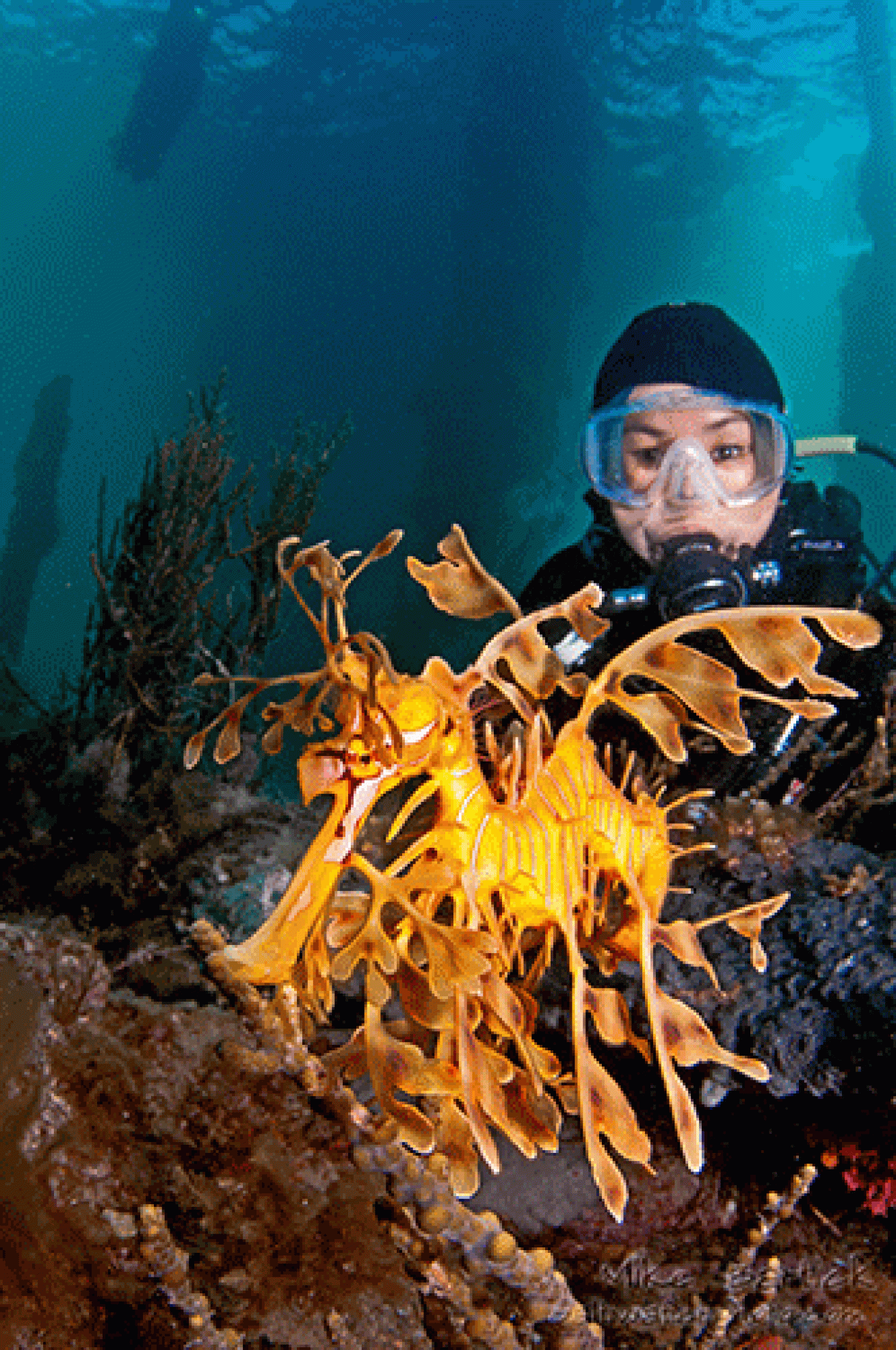
Mike BartickLeafy sea dragons are almost cartoonish, straight from the pages of a children's book that could have been written by Dr. Seuss. Seeing one in an aquarium can never match the feeling of seeing one in its own habitat.

Mike BartickA leafy sea dragon's yawn might not be as dramatic as a frogfish's, but still, catching one with its mouth open is not an easy photo to capture.

Mike BartickThis photo shows the forward set of rakers, which help to to stabilize and move the leafy sea dragon through the water. The ornate appendages do not assist them in movement; these are for camouflage only.

Mike BartickHabitat photo of a leafy sea dragon hunting in algae; this one was relaxed, allowing me to get a full-body photo.
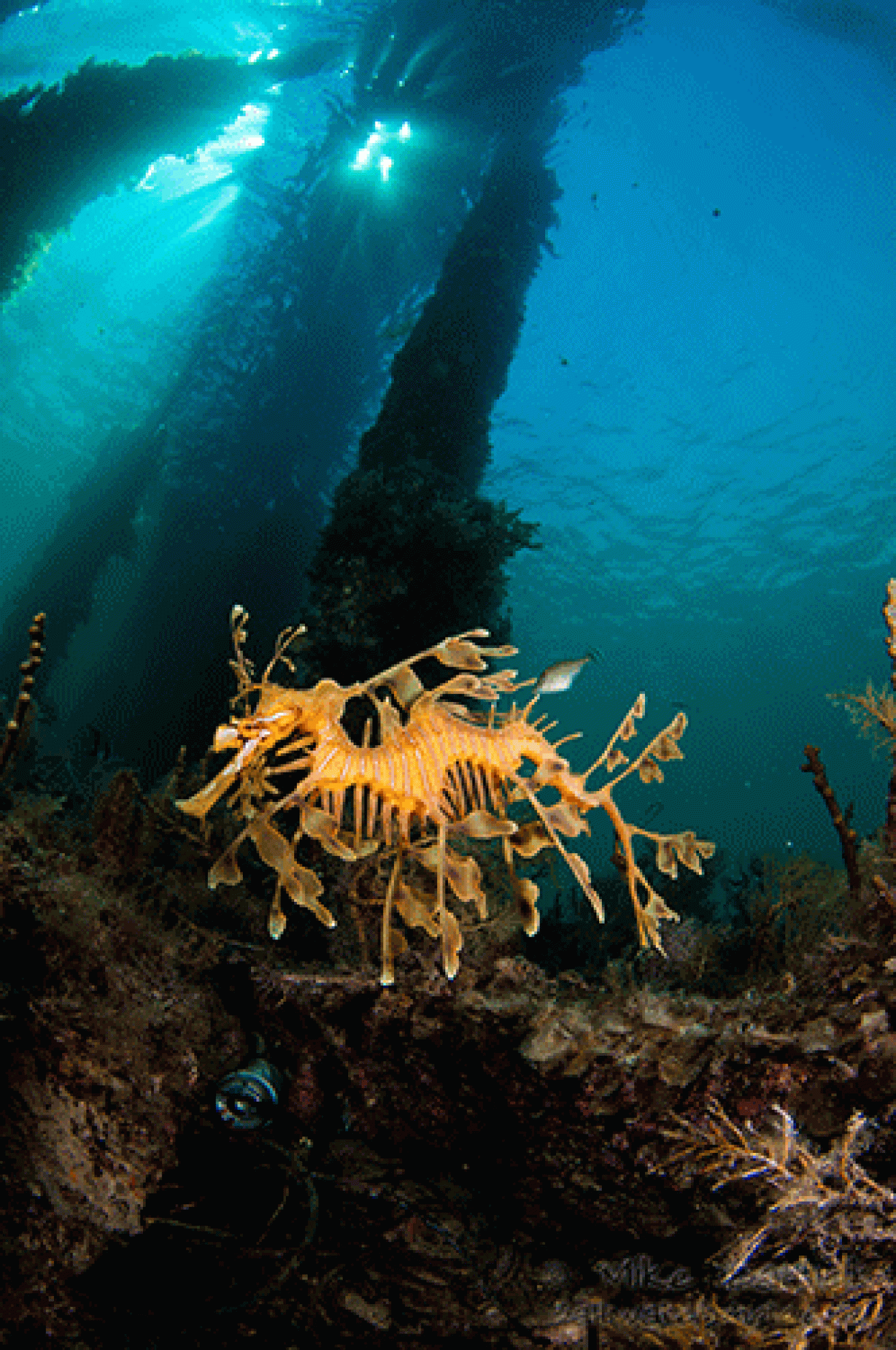
Mike BartickThe pier's pylons provide a stunning backdrop for these unique creatures.
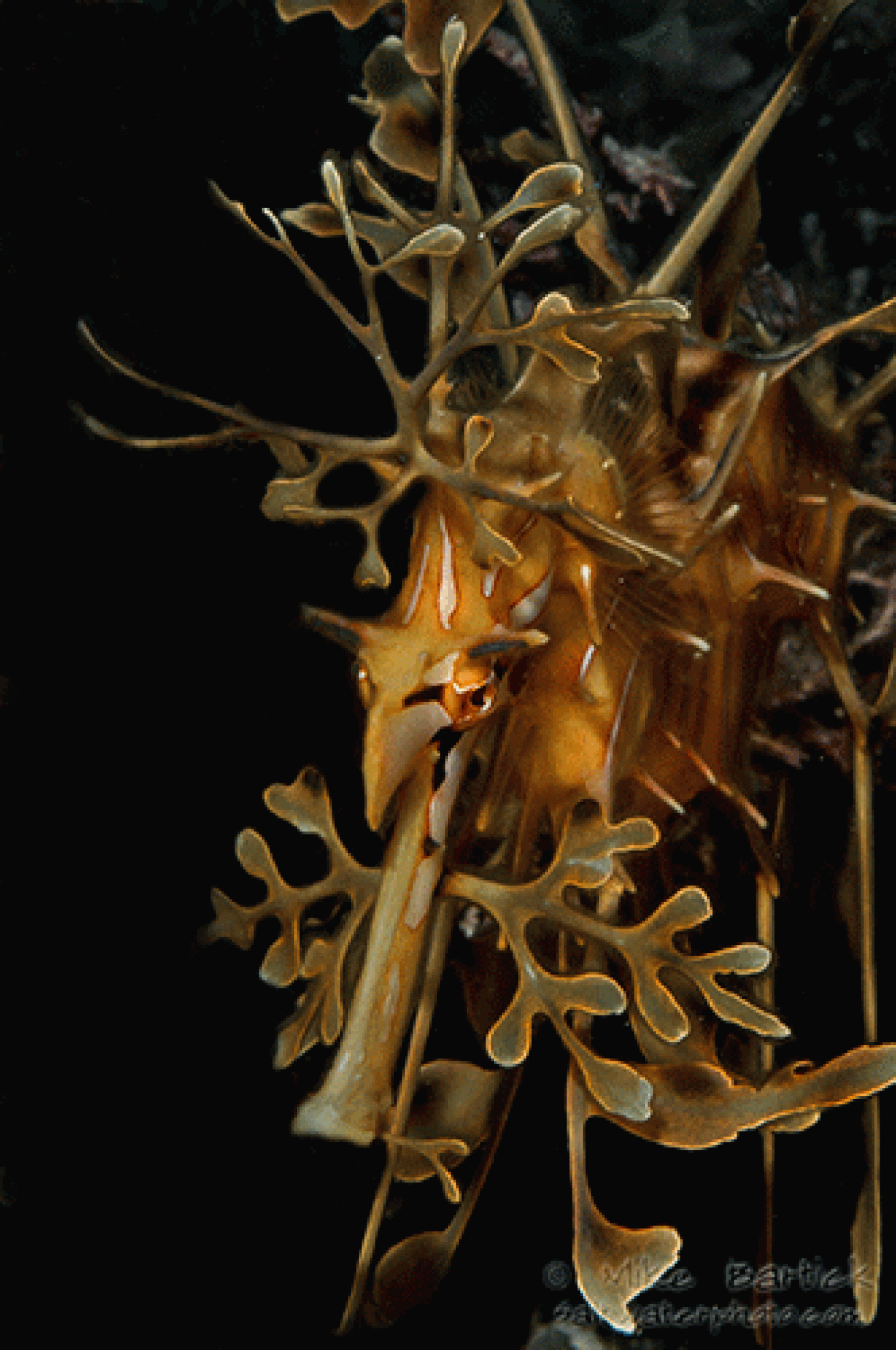
Mike BartickThese seahorse and pipefish relatives have fascinating camouflage abilities.

Mike BartickLegendary Rapid Bay Jetty is actually two piers that are next to each other. The older pier in the background began to fall apart and was condemned and gated off. Eventually, the local government constructed the new pier (foreground), complete with a dive platform. The leafys are found on the older pier. The newer pier is used by fishermen and by scuba divers to enter the dive site.

Mike BartickDive Buddy Steve Reynolds at the dive platform built for scuba divers who come to explore here. Steve conducts research and many other projects in the waters around South Australia.
Mike Bartick was born and raised in Southern California, not far from the ocean in Huntington Beach. After finding his first nudibranch on an Open Water checkout dive, he was immediately hooked on diving. Bartick, who splits his time between the Indo-Pacific and the Eastern Pacific as a freelance photographer, photojournalist and field guide, shoots with a Nikon D300 and D300s, Sea and Sea housings, and YS-D1 and YS 250 pro strobes. To see more of his work, visit saltwaterphoto.com.


